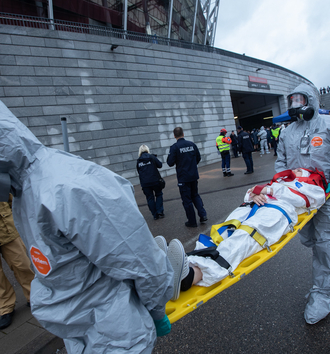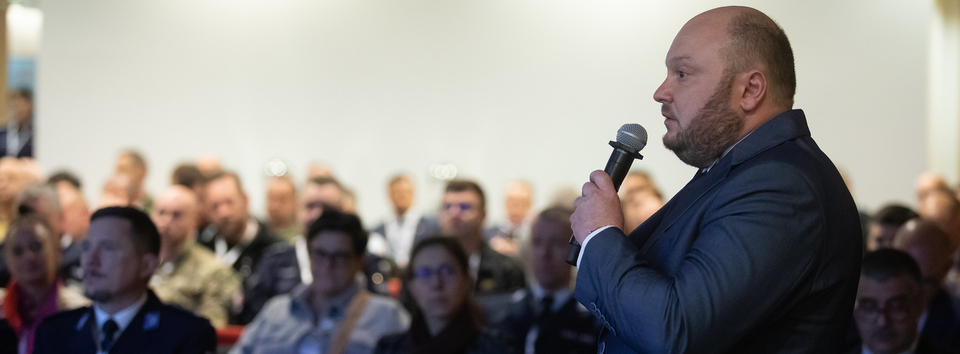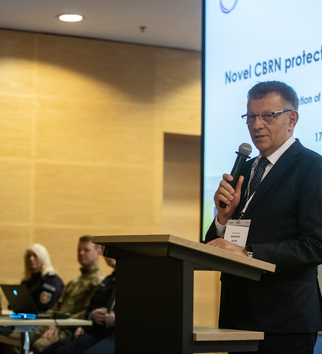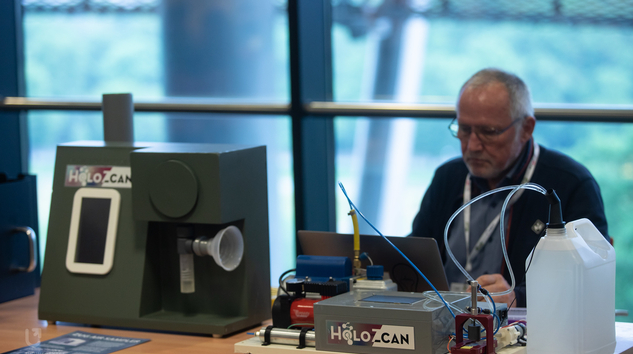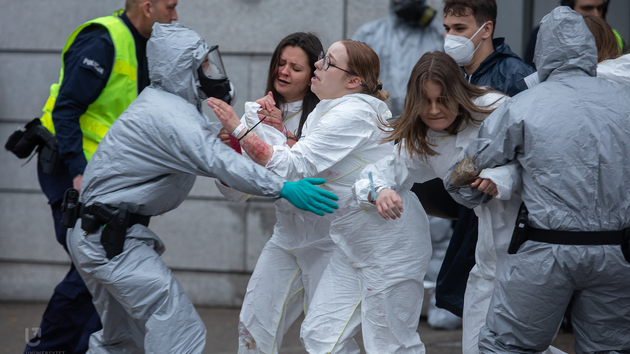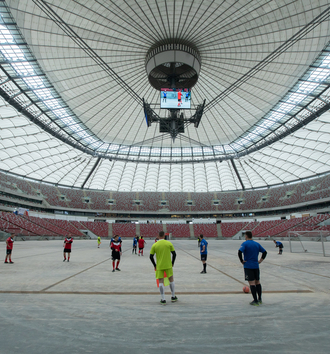Photographic account of the event
Model cooperation of the University of Lodz in the area of security
Prof. Andrzej Kruk, Dean of the Faculty of Biology and Environmental Protection of the University of Lodz, spoke in the introductory part. He said that universities had not only the mission of educating or conducting scientific research, but also cooperating with the universities environment.
We particularly value this third mission, because thanks to it we can learn from you. We learn many important things, which later makes it possible for us to run large European projects. Yet another result of these valuable experiences is being presented today
– emphasised Prof. Andrzej Kruk.
Dr hab. Michał Bijak, Head of the Biohazard Prevention Centre of the University of Lodz, as well as the Dean of the Faculty of Biology and Environmental Protection of the university, defined the main goal of the event, which was to show synergies between the programmes enabling the development of common techniques and procedures for countering CBRN threats.
The Head of the Centre presented three projects led by his team: SAFE STADIUM, which focuses on event security in terms of CBRN threats and response procedures in sports arenas, HoloZcan, which focuses on creating an automated mobile device (an AI-powered holographic microscope) to detect biological threats, and NEST, which uses sensors for simultaneous threat detection combined with security management software.
The organisation of the event was also supported by the representatives of the City Arena of Culture and Sport and the Lodz Regional Police Headquarters – partners in the SAFE STADIUM project.
Terrorist attack during a football match
The scenario of the exercises assumed a junior football cup match at PGE National Stadium. During the exercise, a simultaneous terrorist attack was foreseen involving the use of explosive devices with a chemical agent, a vehicle and a backpack containing a dispersion device with a biological agent left among fans in the stands.
During several hours of extensive exercises which were held simultaneously on the stadium, in its rooms and in front of the facility, among others, evacuation of people from the danger zone and decontamination took place. It was also checked by the use of the measuring devices what factors were released and how they threatened the event participants.
The following services also participated in the exercises: State Fire Service, Military Gendarmerie and Medical Rescue Teams. Students of the War Studies University and Helena Chodkowska University of Technology and Economics pretended to be injured fans of the football match.
CBRN threat protection tools are attractive to EU countries
The event was summarised by the European Commission representatives, who agreed that the projects carried out by the University of Lodz Biohazard Prevention Centre were a model example of cooperation between many entities and institutions involving many partners from member countries.
These projects’ effects are important for Germany, which will host the 2024 UEFA European Football Championship, as well as France, the organiser of the 33rd Summer Olympic Games in 2024.
These projects, managed by the University of Lodz, show that funding from the European Security Fund should continue and produce tangible results that will be useful for the whole society
– said Anna Sobczak from the European Commission.
The exercises were discussed by mgr inż. Maksymilian Stela from the Faculty of Biology and Environmental Protection at the University of Lodz, who stated that the solutions developed as part of the NEST, SAFE STADIUM and HoloZcan projects had achieved the desired operational capacity.
We have shown how three complementary to one another projects work. All of them lead to the improvement in the security system in public spaces. This is not over yet, work in projects is still underway
– concluded mgr inż. Maksymilian Stela
The projects are financed by the European Union:
- SAFE STADIUM (Agreement No. 101034226 – SAFE STADIUM) from the Internal Security Fund - Police,
- NEST (contract No. 101018596 – NEST) from the Horizon 2020 programme,
- HoloZcan (contract No. 101021723 — HoloZcan) from the Horizon 2020 programme.
Previous texts about the projects:
- HoloZcan – Portable detector of bacteria, viruses and other biological hazards
- Safe sports stadiums – a project with Real Madrid
- Uniwersytet Łódzki zadba o bezpieczeństwo na arenach sportowych [University of Lodz will take care of safety in sports arenas] (in Polish)
Edit: Honorata Ogieniewska, Communications and PR Centre, University of Lodz; photos: Dr Bartosz Kałużny, Communications and PR Centre, University of Lodz; source material about the projects: Biohazard Prevention Centre, University of Lodz


